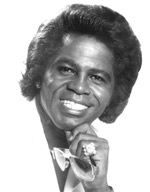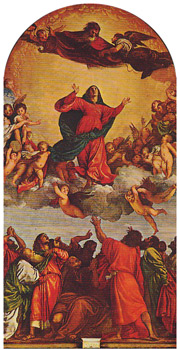James Brown: Soul Power (pt. I) (1971)
 Here’s the Godfather of Soul at his best, at a time when everything he sang became gold – often literally. Sex Machine had just come out, and the amazing Revolution Of The Mind, Live at the Apollo vol III (which includes a version of Soul Power) was about to be released. Soul Power belongs on the same shelf with Sex Machine: call and response, verse and bridge, ad lib lyrics (and Bootsy Collins on bass). It’s about achieving the power of the soul:
Here’s the Godfather of Soul at his best, at a time when everything he sang became gold – often literally. Sex Machine had just come out, and the amazing Revolution Of The Mind, Live at the Apollo vol III (which includes a version of Soul Power) was about to be released. Soul Power belongs on the same shelf with Sex Machine: call and response, verse and bridge, ad lib lyrics (and Bootsy Collins on bass). It’s about achieving the power of the soul:
Know we need it, soul power, we got to have it, soul power, know we want it, soul power, got to have it, soul power, give it to me, soul power, we need it, soul power, we want it, soul power, we got to have it, soul power.
In the early 70s Brown would alternate between spiritual/social tunes (such as Get Up, Get Into It, Get Involved, Say It Loud – I’m Black and I’m Proud and many others) and highly sexual ones like Sex Machine, or the endless variations on the topic of Hot Pants – obviously a piece of clothing very dear to James.
Soul Power was first published in three parts. At the time the standard was the 45 rpm disc, or single, which could only include up to 3’30” of music per side. Very often, 60s artists recorded longer versions of songs, which would later be split, usually in two parts, to be printed on both sides of a single. There are a number of examples, like the incendiary Save Me☊ by Brian Auger and the Trinity feat. Julie Driscoll (side note: this is the most fearless Aretha Franklin cover I know of, and perhaps the most effective, ever). Many Soul artists like Sly & The Family Stone and Isaac Hayes worked this way, and a few years later nigerian musician Fela Kuti would record such endless jams that he needed two sides of an LP just for one song.
Soul Power, part 1 came out in 1971; it lasted 3’20”. Not really long enough, but if you also had parts II and III you could stretch it a bit. Then, in 1986, a very important thing happened: Polydor (the label that owns Brown’s master tapes) decided to capitalize on JB’s influence on Hip hop, and started to print longer edits of his most important music. The very first of those albums, the essential In The Jungle Groove, includes a 8’07” re-edit☊ of Soul Power. But the complete studio recording, over 12 minutes, appeared for the first time only in 1996. Being such extended and often improvised tunes, James sometimes made up the lyrics as he went: these are the bits Eddie Murphy used to make fun of♾ at the beginning of his career. As for the song’s legacy, according to the website Whosampled.com, Soul Power has been sampled in fiftythree different songs.
buy from amazon • buy from itunes • play on spotify
Public Enemy: Fight The Power (1989)
 One of the ways in which Pop music fights (the power, or anything else it goes against) is with sound: from Rock’n’roll to Hip hop to Punk, radical sonic solutions (from loud drums to extreme distortion) have always been an essential part of the recipe. Fight The Power is one of the earliest (and best) examples of how Hip hop can be musically abrasive – as well as lyrically. The song was written for Spike Lee’s 1989 movie Do The Right Thing, and a different version☊ was subsequently included in Public Enemy’s third album Fear Of A Black Planet (1990).
One of the ways in which Pop music fights (the power, or anything else it goes against) is with sound: from Rock’n’roll to Hip hop to Punk, radical sonic solutions (from loud drums to extreme distortion) have always been an essential part of the recipe. Fight The Power is one of the earliest (and best) examples of how Hip hop can be musically abrasive – as well as lyrically. The song was written for Spike Lee’s 1989 movie Do The Right Thing, and a different version☊ was subsequently included in Public Enemy’s third album Fear Of A Black Planet (1990).
As the title suggests, Fight The Power is about fighting “the powers that be”. But as much as the lyrics are political and controversial (dissing two untouchable american Pop icons, Elvis Presley and John Wayne, in the same sentence), it seems to me that the truly revolutionary element of this song is the music. Which is entirely made of samples (according to Chuck D: “We put loops on top of loops on top of loops”), used both as an homage to past African American music, as well as to create a radical new sound, a sonic barrier that would entice some people, and scare away others. Nothing new here: using sound to discriminate your audience has been a long standing musical practice. In this song, sampling is taken to the max. Here’s an unofficial list of the music that was used to create Fight The Power: (source: Whosampled.com)
Different Strokes by Syl Johnson
Say It Loud, I’m Black and I’m Proud by James Brown*
Sing a Simple Song by Sly & the Family Stone
Funky Drummer by James Brown*
Hot Pants Road by The J.B.’s*
I Know You Got Soul by Bobby Byrd*
Whatcha See Is Whatcha Get by The Dramatics
I Don’t Know What This World Is Coming To by The Soul Children
I Shot the Sheriff by Bob Marley and the Wailers
Funky President (People It’s Bad) by James Brown*
Fight the Power by The Isley Brothers
Give It to Me Baby by Rick James
Let’s Dance (Make Your Body Move) by West Street Mob
Pump Me Up by Trouble Funk
Planet Rock by Afrika Bambaataa & the Soulsonic Force
Saturday Night Live From Washington DC Pt. 1 by Trouble Funk
AJ Scratch by Kurtis Blow
Yo! Bum Rush the Show by Public Enemy
Teddy’s Jam by Guy
On the song’s Wikipedia page there is a very detalied analysis of this song’s musical structure and composition, as well as sampling techniques. No surprise: this is one of the most influential sound creations ever.
The official video was also directed by Spike Lee, and it features the band in a street demonstration that looks and feels like those of the civil rights movement of the 1960s, complete with Malcolm X banners and Black Panthers squad (here’s the 7′ extended version of the clip). This song is crucial to understand the importance of Public Enemy’s sound in the history of urban music: after Fight The Power, Hip hop has never been the same again.
buy from amazon • buy from itunes • play on spotify
* With five samples included, James Brown is the not-so-secret #1 musical ingredient of this tune.
Frankie Goes To Hollywood: The Power of love (1984)
If I had to pick an anthem for the cause of gay marriage, this would certainly be my choice – and not just for musical or lyrical reasons. When Frankie Goes To Hollywood sung it in the mid 80s, they were among the very few openly gay Pop artists (yes, at the time George Michael was officially hetero, and would remain so for another decade or so), with the exception of the truly seminal (pun unintended) disco band Village People and little more. Their music, produced by Trevor Horn, was very exciting, and the videos quite intense. Sometimes too intense, like the infamous Relax♾ clip: “The first official video, directed by Bernard Rose and set in a S&M themed gay nightclub, featuring the band members accosted by buff leathermen, a glamorous drag queen, and an obese admirer dressed up as a Roman emperor, was allegedly banned by MTV and the BBC, prompting the recording of a second video (…). However, after the second video was made, the song was banned completely by the BBC, meaning that neither video was ever broadcast on any BBC music programmes.” (from the song’s Wikipedia page).
The Power Of Love is a classic love ballad, built around Holly Johnson’s beautiful voice. Apparently, at first it was meant to be funny: “The track was first featured during the John Peel Sessions the band performed on during 1983; it was slower, and emphasized the track’s original camp ironic content.” It sounds likely, considering the rest of the band’s repertoire. However, the irony was subsequently lost – forever. Maybe because of the religious imagery used on the cover and in the videoclip (which is basically a moving Presepio). Or because Holly sings it like he really believes it. Or perhaps because no matter how corny they get, when it comes to love songs people will fall for anything, and the higher they soar, the better we like’em. The fact is that The Power Of Love has become an immensely popular love anthem, and a New Year’s Eve standard: “1 of The most Epic songs of all time. I remember the Millennium New Year at a mad 24hr club night with tons of amazing D.J.’s (…) And right before midnight a dance remix came on of this tune and as it hit midnight I had the most perfect kiss with the perfect person and I was flying!” (from the comments on Youtube)*.
I’ll spare you the truly endless list of remixes, re-edits, reprints and covers (you can find the list on Wikipedia). The original went to #1 in UK: “Since then, reissues and/or remixes have been top 10 UK hits on two other occasions, hitting #10 in 1993 and #6 in 2000. The Power Of Love has also charted in the UK in a version by Holly Johnson♾ (a solo recording from 1999), and a 2012 version by Gabrielle Aplin♾.”
According to Wikipedia, there are nineteen different songs entitled The Power Of Love (with or without the article), from 10cc to Jennifer Rush (covered by Celine Dion) to Luther Vandross and Barry White (plus seven albums, one film and two tv episodes). The most notable other The Power Of Love is certainly the one by Huey Lewis and The News featured in the first Back To The Future movie, a catchy pop thing♾ that got them an Oscar for best song in 1985. But while Huey Lewis’ tune sounds hopelessly 1980s, Frankie’s song remains a timeless evergreen.
buy from amazon • buy from itunes • play on spotify
* Full disclosure: I also played The Power Of Love at a 1985 New Years’ Eve party, back to back with the 8′ version of Do Me Baby by Prince: spiritual love vs carnal love.
Runner ups
Patti Smith: People Have The Power♾ (1988) An intense song written by Patti and Fred Sonic Smith (her husband and former MC5 member). Sadly, it has become the prêt à porter music solution for any wannabe people’s person, from Bono to _____ (fill the blank with your favorite politician).
Tori Amos feat. Damien Rice: The Power Of Orange Knickers☊ (2005) Because, apparently, knickers have the power too – although the song is about something else entirely, and the meaning of the title remains obscure.
Modern Lovers: Roadrunner☊ (1976). According to Greil Marcus, this is “the most obvious song in the world, and the strangest”. It’s also a favorite of mine, plus it mentions the 50.000 watts of power radio stations you could pick up driving around at night in the US. Those stations, that broadcasted Rock’n’roll, Blues and Soul in far out places, were pivotal for the diffusion of Pop music in the 1950s and 60s.
Claire Hamill: You Take My Breath Away♾ (1974) Another variation on the power of love. This sweet country tune has become a minor classic, thanks to the Tuck & Patti cover (on their first album, Tears of Joy, 1988) and to the very popular, and incredibly moving 2003 Eva Cassidy version☊.
The Stooges: Raw Power☊ (1973) A great anthem, from a great album by the same name. A sound so powerful and raw, it truly shaped much of the music the followed.
